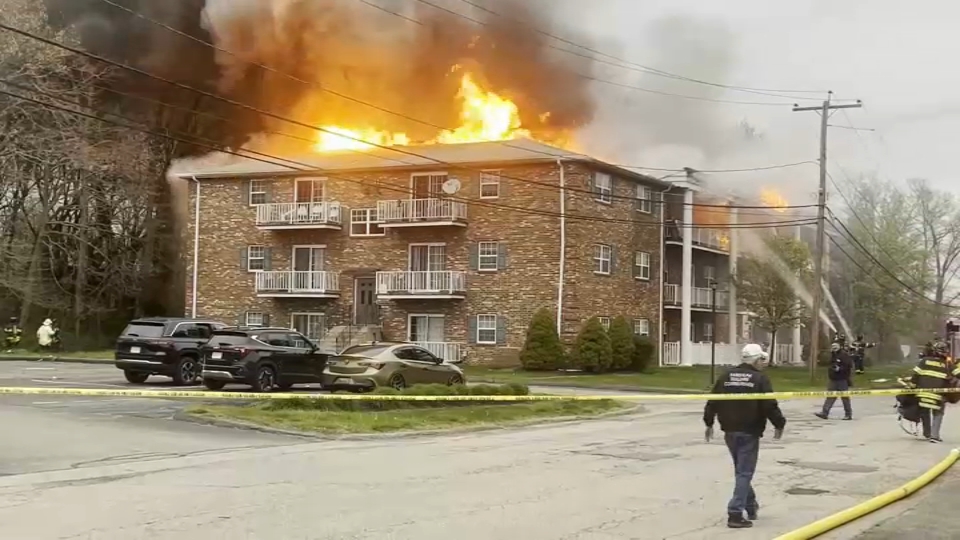Perry: A three-point plan for fixing the Patriots' sputtering offense originally appeared on NBC Sports Boston
FOXBORO -- The Patriots are mathematically in the playoff hunt. But for how long?
Consider that they have the league's toughest strength of schedule remaining, according to ESPN's Football Power Index. Consider they are the 28th offense in football when it comes to turning first downs into a fresh set of downs or a touchdown, and they're 25th in Expected Points Added per play.
Get Boston local news, weather forecasts, lifestyle and entertainment stories to your inbox. Sign up for NBC Boston’s newsletters.
Keeping that playoff positioning won't be easy, barring some relatively drastic changes to their efficiency offensively in a league where the most efficient offenses -- Kansas City, Miami, Philadelphia, Buffalo rank one through four in EPA per play -- are its best teams. FiveThirtyEight places New England's chances at making the postseason at just 39 percent, behind the Chargers (40 percent), Bengals (47 percent) and Jets (59 percent), who are currently vying with Bill Belichick's club for the sixth and seventh playoff spots in the AFC.
Next Pats Podcast: How Bill Belichick can change the Patriots offense to get Mac Jones RIGHT | Listen & Follow | Watch on YouTube
Local
In-depth news coverage of the Greater Boston Area.
But are drastic changes even possible on the offensive side of the ball for the Patriots as they emerge from the bye? Was that week off enough time for them to alter who they are?
Belichick was asked Wednesday if, during a bye week, it's possible to diverge from that which the team has worked on all season, dating back to training camp.
"I mean, there's no laws or regulations," he said. "You can do whatever you want to do."
How realistic is it, though, that the Patriots exhibit real change?
"Depends on what you want to do," Belichick added. "That would depend on what you would consider major and what you don't consider major. Each team is different. Players are different. Systems are different. What works for one might not work for another, vice versa. It's like anything else. You take the time you have, you try to use it as productively as possible.
"I'm sure that's what you do in your life. That's what we all try to do in our lives. That's what the team tries to do. Take the time. Figure it out. See what the problems are. Address them. If you've got to make a big change, make a big change. If you've got to make a little change, make a little change. Just try to figure it out and do the best thing you can for the team. I don't know what else to do."
Big changes ... little changes ... let's dig into some of the alterations the Patriots may lean into in the second half of the year if they hope to turn around their offensive fortunes.
Time to bail on zone runs
Among teams with nine games played, only the Eagles have called more zone runs than the Patriots, according to Sports Info Solutions. (When including teams who've played 10 games, the Patriots have the sixth-most zone attempts.) That includes both inside-zone and outside-zone calls, which were heavily emphasized through training camp and signaled a very real change to the offense under the direction of Belichick and Matt Patricia.
Despite that extensive usage, per SIS, the Patriots average just 3.5 yards per attempt on those zone calls, which ranks 27th in the NFL. Moreover, their stuff percentage -- runs for zero or fewer yards -- on those zone runs ranks third-worst in the league at 22.5 percent.
Those numbers suggest that the Patriots are among the most zone-happy teams in the league despite being among its least-effective zone rushing teams. Not ideal.
The alternative? Turn to more gap runs. As it turns out, that's one area offensively where they rank atop the NFL.
Per SIS, their 6.1 yards per rushing attempt using gap runs -- counter, power, trap, wham and duo -- places them first in the league. Their stuff percentage sits at just 9.6 on those plays, which ranks them 27th in the league in that category.
Despite the fact that zone running was a focus of New England's summer work, it seems as though defenses across the NFL have started to key in on stopping zone runs.
Defensive units are getting more accustomed to seeing zone calls as the Shanahan-style running game has spread, and rosters have added defensive personnel defensively who have the speed and agility to move horizontally to mirror what's happening on the other side of the ball. As a result, runs that are more downhill in nature have been overpowering some of the lighter and quicker defenses that are now commonplace in the league.
According to Pro Football Focus, outside zone (4.4 yards per carry) and inside zone (4.3) runs have been less productive league-wide this season than power (5.3) and counter (5.2).
If the Patriots lean into what they do better in the running game, they'll go gap-heavy, getting away from that which they harped on during camp.
Run less on first down
The Patriots may not trust their passing game for a number of different reasons. They led the league in interceptions through Week 9. They have an offensive line that has had issues in pass protection since Week 1.
But by leaning on the run as they have -- whether that's zone or gap runs -- they've become relatively predictable situationally. Among teams that have played nine games, they're seventh in first-down rushing attempts. They're 22nd in the NFL in yards per carry on first down, and part of the reason they rank even that highly is because of the ability of their backs to force missed tackles.
One indication that teams are expecting the Patriots to run on first down: They've been hit at the line of scrimmage on first-down runs on 48.6 percent of those calls, per SIS. That's the second-highest rate in the league, behind only the run-dependent Browns.
Perry's Midseason Report Card: Offensive line needs to step up
Meanwhile, the Patriots are 29th in the NFL in first-down drop backs, but the numbers would suggest they should be trying to work their way up that list. They're smack in the middle of the league in yards per attempt on first-down throws (7.5 yards, 16th). Their sack percentage on those first-down drop-backs (4.8 percent) also places them right in the middle of the league (16th). Not terrible. And their pressure percentage on first-down throws is better than league average (25.7 percent, 21st).
Those numbers are all improvements over New England's passing numbers on second, third and fourth down. Outside of first down, the Patriots average 7.3 yards per attempt, their sack rate sits at 8.5 percent, and their pressure percentage is 34.2.
If the Patriots are willing to put the ball in Mac Jones' hands a little more often on early downs, it may do the rest of their offense some good.
Don't be afraid to go the college route
Jones has said on multiple occasions this season that he enjoys running run-pass option plays, thanks in part to the fact that he did that extensively in college and with great success. Still, the Patriots remain among the most RPO-resistant offenses in the league, according to Pro Football Reference, with Jones ranking 33rd in the NFL in RPO attempts in his six games.
Granted, the Patriots weren't all that effective with their RPO calls during the game in which they used them most extensively this season: They ran 12 against the Jets at the Meadowlands in Week 8 and, with a loss of 10 thanks to a holding penalty mixed in, accumulated just 19 total yards. Yet there's room for the New England RPO package to grow.
Who's to say that with greater RPO usage and variety -- they've run almost exclusively bubble screens to the outside on RPO calls, but could add slants, "glance" routes or other quick-hitters to their repertoire -- they don't experience better success?
Some of the league's most efficient quarterbacks this season live on a steady diet of RPO calls; Tua Tagovailoa, Jalen Hurts, Lamar Jackson, Patrick Mahomes, Joe Burrow and Josh Allen all rank inside the top 10 in RPO attempts, per Pro Football Reference. Heaping more such plays onto Jones' plate might make sense.
Next Pats Podcast: Patriots just skimming the surface on RPO package that could JUMPSTART Mac Jones | Listen & Follow | Watch on YouTube
Another concept which is tied more to the college game that could benefit the Patriots based on what they've shown thus far this season? Turning to a no-huddle attack more frequently.
The Patriots are 15th in the NFL this year with 38 no-huddle pass attempts, according to SIS. And while their interception percentage on those plays is high (5.3, 4th in the NFL), they've been productive when keeping it away from the other team. They're seventh in yards per no-huddle attempt (8.3), and they are one of only five teams with at least 35 no-huddle attempts that hasn't been sacked in those situations.
If implemented, would these qualify as big changes to the Patriots offense, according to Belichick? Little ones? Either way, we know Belichick is typically open to adjustments.
"What I'm so thoroughly impressed with Bill on is his ability to adapt and evolve," Josh McDaniels said on the Do Your Job III special following Super Bowl LIII. "He said (that season), 'If you keep holding on to what you'd rather be -- no-huddle, spread formations, 34 points a game -- then you're probably going to end up regretting a lot of things at the end of the year.'
"What are we really good at? What's the most consistent part of our team offensively? Then you commit to it."
There are a few avenues available to the Patriots to improve offensively based on what they've shown thus far this season. Even if they're significant alterations to their original plan of attack, might Belichick commit to them in the hopes of changing the outlook of his team's season?
No laws against it.



